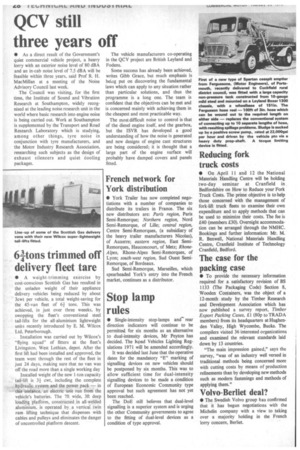QCV still three years off
Page 30

If you've noticed an error in this article please click here to report it so we can fix it.
• As a direct result of the Government's quiet commercial vehicle project, a heavy lorry with an exterior noise level of 80 dBA and an in-cab noise level of 7.5 dBA will be feasible within three years, said Prof R. H. MacMillan at a meeting of the Noise Advisory Council last week.
The Council was visiting, for the first time, the Institute of Sound and Vibration Research at Southampton, widely recognised at the leading noise research unit in the world where basic research into engine noise is being carried out. Work at Southampton is supplemented by the Transport and Road Research Laboratory which is studying, among other things, tyre noise in conjunction with tyre manufacturers, and the Motor Industry Research Association, researching such subjects as the design of exhaust silencers and quiet cooling packages. The vehicle manufacturers co-operating in the QCV project are British Leyland and Fodens.
Some success has already been achieved, writes Gibb Grace, but much emphasis is beiag put on discovering the fundamental laws which can apply to any situation rather than particular solutions, and thus the programme is a long one. The team is confident that the objectives can be met and is concerned mainly with achieving them in the cheapest and most practicable way.
The most difficult noise to control is that of the diesel engine itself, and the gearbox, but the ISVR has developed a good understanding of how the noise is generated and new designs of engine cast structures are being considered; it is thought that a large part of the engine surface will probably have damped covers and panels fitted.
































































































